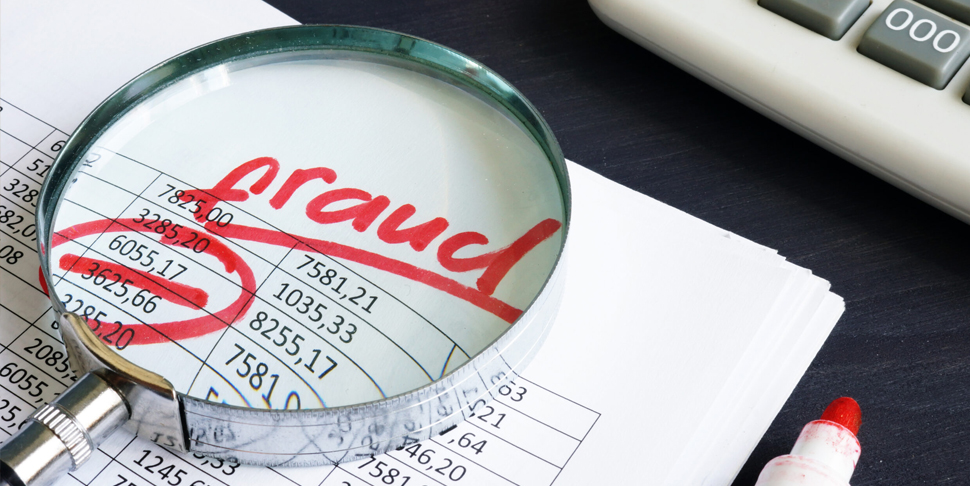by
Stacy Wise
| May 16, 2024

Check Fraud
Written by Andrea Klinedinst, Executive Administrative Assistant
Just like all the other kinds of fraud discussed on our blog, check fraud has been on the rise in recent years. The Financial Crimes Enforcement Network (FinCEN) sent out an alert last year that crimes targeting the U.S. mail for check fraud have been on the rise since the COVID-19 pandemic. This is not a new concept; check fraud has been a concern for many years. In 1999, the Check Fraud Working Group, which was comprised of the nation’s top financial regulators and investigative organizations, released a booklet called “Check Fraud: A Guide to Avoiding Losses.” 25 years later, even though people are writing less checks due to an increase in electronic payment options, check fraud continues to be a growing concern. In 2023, FinCEN received approximately 665,000 reports of check fraud, almost double the ~350,000 cases reported in 2021. This year already has seen around 168,000 reports. But what is check fraud, how is it committed, and what can you do to help prevent it?
What is check fraud and how is it committed?
Check fraud is when a criminal either alters a check you wrote, replicates or forges a legitimate check, or even sends you a bad or fake check they wrote. There are several ways that criminals will attempt to commit check fraud.
Check washing or lifting ink: This is a process where the criminal steals a check that is already written and uses chemicals to “wash” the check or lift the ink from the check. They remove what is written in the payee line and the amount. They then essentially have a blank check to write for any amount to whoever they want with your signature. They either cash the check or deposit it into their own account and then the money is gone before the new fraudulent amount hits your account.
Check cooking: This is similar to washing where the criminal fills in their own payee and amount, but it is done with technology. The criminal scans the check and alters it using software and then can print their own checks with your signature.
Check theft: Criminals are targeting mailboxes and USPS blue boxes to find mail that may include a check. From there, they can use one of the 2 methods above to alter the check. In some cases, they steal blank checks and then forge signatures.
How can you protect yourself from check fraud?
- Protect your banking and personal information. Make sure any information involving your bank accounts and online banking info is secure. Don’t share this information with anyone. Limit the amount of information you include on your checks. Keep memo lines as general as you can, and avoid including your SSN, birthdate, phone number, or driver’s license number.
- Use alternate forms of payment when possible. MNB online and mobile banking offers Bill Pay to allow your bills to be paid through our system, so you don’t have to mail a check. You can also get a debit card with your checking account or apply for a credit card through MNB. Whenever possible, avoid putting a check in the mail.
- Be mindful when writing checks. Using gel ink to write your checks can add an additional layer of security. Gel ink soaks into paper better, making it harder for a criminal to “wash” your check. Also, be sure not to leave any space before or after the amount on your check; otherwise, someone could add numbers to your check that you didn’t write.
- Mail checks at the Post Office. If you absolutely have to mail in a check, make sure you mail it from the post office or a secure mailbox that will be checked daily. Leaving mail in your own mailbox is not as secure and could lead to theft.
- Monitor your accounts for fraudulent checks. Monitoring your checking accounts can enable you to catch check fraud sooner and protect yourself from financial loss.
- Order checks from a reputable source. At MNB, we order our checks for our checking accounts from Harland Clarke, our preferred check vendor. Reputable check vendors like Harland Clarke allow you to choose trackable delivery so you can track your checks and be notified about their status. This way, if your checks are stolen before you receive them, you can notify us right away.
How can you protect yourself from fraudulent checks?
Not only do you have to watch for criminals stealing and committing fraud with your checks, but you should also watch for someone giving you fraudulent checks. One popular scam is when someone is supposed to be sending you a check, but they “inadvertently” send you more than they owe you. They then ask you to deposit the check and send them the extra money. Soon after you deposit the check, the check bounces, and then you have lost out on the payment they owed you and the money you sent this scammer. Sometimes the scammer doesn’t need to pay you but is claiming you won a sweepstakes. This scam is popular online, by phone, and even through mail. If something sounds too good to be true, it probably is.
Check fraud can be prevented by taking the above measures and making wise decisions about your checks. As always, if you suspect you are a victim of fraud, contact our Customer Service Department at 877-647-5050, or if you notice your checks have been stolen or a check doesn’t look right on your account, notify us immediately. Be informed and stay safe!